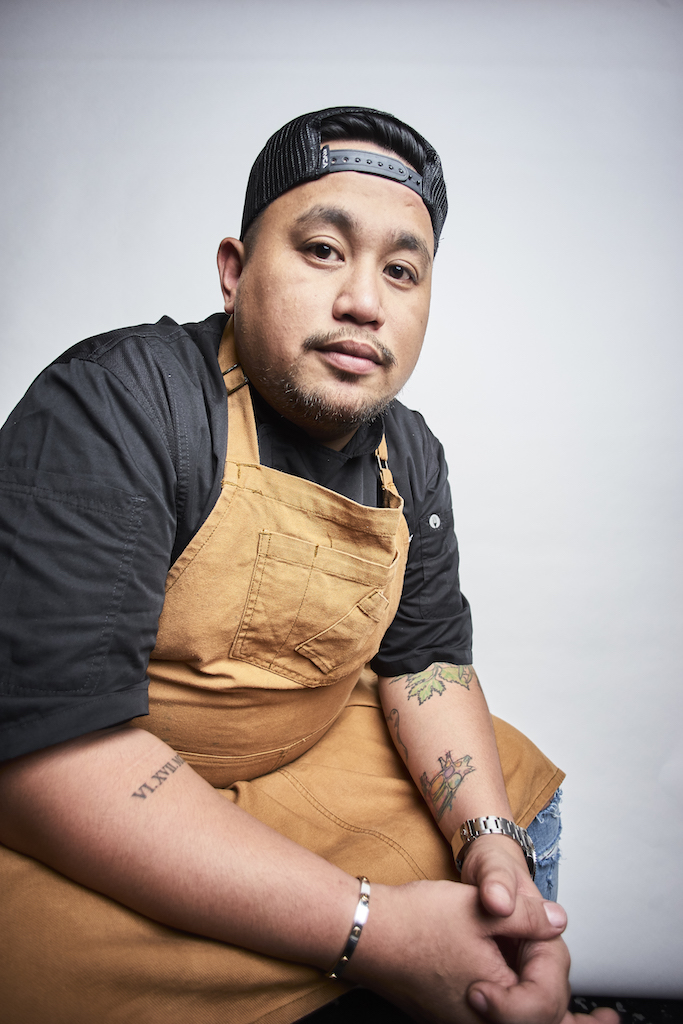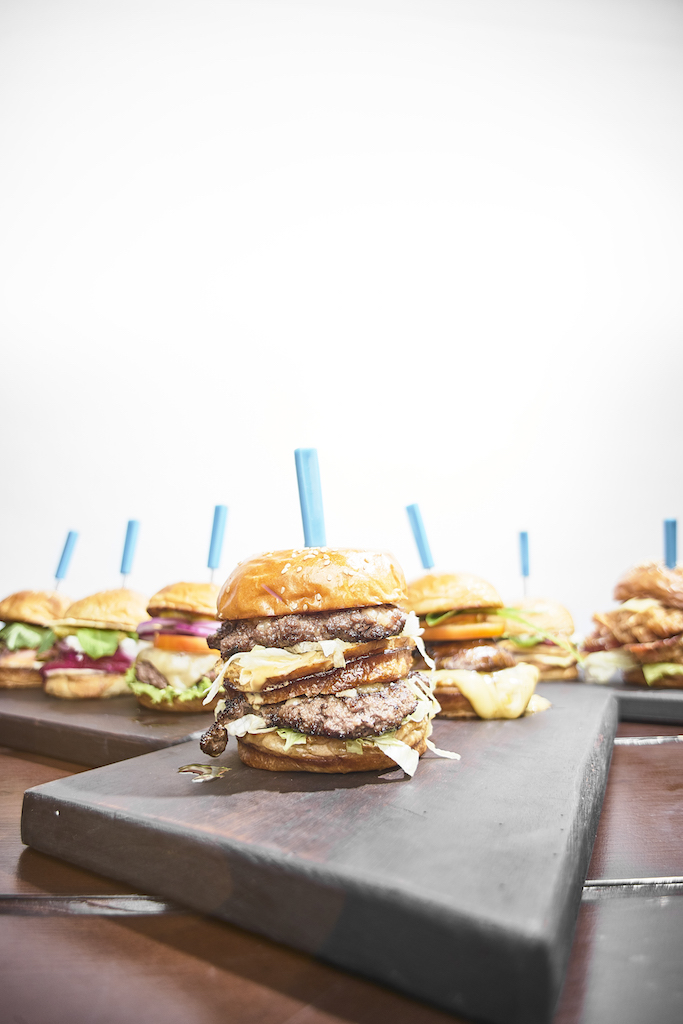Mikel Zaguirre was in high school when he heard the big news—the particulars of which included his sick grandfather, the end of a sports career that had hardly begun, and the idea of pursuing a life in cooking instead.
His grandfather, who had recognized Zaguirre’s potential in the kitchen, was starting to question the point of continuing to spend on medical treatment—it seemed to him a better idea to use the money on his grandson’s culinary education. He told Zaguirre: “Kel, wag ka na maglaro ng basketball. Ituloy mo ’yung pagluluto mo. Mag-enroll ka sa cooking school.”
Zaguirre, although mildly confused and uninterested, was not completely resistant to the decisions being made for him. “I was doing basketball training for UST, tapos nalaman ko na lang one day that my mom had enrolled me in a hotel and restaurant management course in College of Saint Benilde (CSB). Sabi ko, ‘fine, sige.’” What followed were a couple of semesters of indifference, likely a subconscious retaliation against the gap that existed between Zaguirre’s expectations for himself and his parents’ plans.
The turning point came during his first cooking class, where things started to make sense. He knew a few things that other students did not. He knew, for one, how to chop fast; he knew that cheese, milk, and butter could make for a decent mac ’n’ cheese sauce. “Unlike most of my classmates, medyo domesticated na ako. I rediscovered the fun of cooking. Nag kick-in ’yung competitive nature ko from basketball to cooking. So then I learned all the basics and I eventually fell in love with food. It was all easy for me,” he says.
And what did Mikel Zaguirre think of that kind of work culture [shouting in the kitchen, etc.]? “I’m like that. I was molded by that experience. I grew up in that kind of kitchen so I understand it.”
But a career in food is never easy. This was a fact that gradually revealed itself to Zaguirre as the next stages of his culinary life unfolded, with each succeeding stage becoming increasingly demanding and less and less like his glory days in the culinary laboratories of CSB.
Barely out of an internship program at EDSA Shangri-La, Manila, the young graduate immediately accepted a job offer at Ariel’s House in Boracay. “I was the head chef. The pay was low and everything was so disorganized. I had to take care of the hotel and the restaurant. I had to do the accounting, I had to do the marketing, I had to do the salaries of everyone, the purchasing. I learned all of that in one year without anyone guiding me so talagang na-shock ako. But at least I knew how to cook. Sabi ko sa sarili ko, what could be worse?”
In Zaguirre’s mind, Boracay was the best thing that could have happened to him at that point. It was the perfect place to build a network, make friends in the industry, and learn things about food that he otherwise wouldn’t have learned working a restaurant job in the capital.
A career in food is never easy. This was a fact that gradually revealed itself to Mikel Zaguirre as the next stages of his culinary life unfolded.
But considering the magnitude of those experiences—how even the satisfaction brought on by experiential learning and making indispensable connections with like-minded people can be just as grueling as the physical and mental toil of the job—working in Boracay was also the worst thing that could have happened to a fresh graduate like him. After his very first official job as a chef, he got burned out.
So he went back to Manila. But, oddly enough, not to take a break.
“There was an opening at this Michelin-rated French bistro called La Régalade. I applied as a junior prep cook—the lowest position—because I didn’t want too much responsibility then. Utusan lang nila ako, masaya na ko. Also because I felt like I had to take a refresher course. Gusto ko matutunan ulit ’yung skills ko.”
He got more than that, though, under the leadership of chef and owner Alain Rayé who, according to Zaguirre, was equal parts brilliant and intimidating. “Para siyang si Gordon Ramsay. But I can see that he had to do all that because it was his name on the line. Michelin-starred siya, eh. It’s his recipes. And it’s French cooking.”

And what did he think of that kind of work culture? “I’m like that. I was molded by that experience. I grew up in that kind of kitchen so I understand it.” French cuisine became the backbone of his technique, while a necessary aggression colored his interactions in the kitchen.
Zaguirre, once indifferent to the idea of a culinary career, was producing similarly aggressive, loud food. “People would say that it’s an explosion of flavors. It’s never bland or simple. Laging malasa. It’s always borderline over.” Zaguirre and his food can be called unapologetic, but he would perhaps just as likely point out that there’s not really anything to apologize for. “Alam ko sa sarili ko that I really know how to cook.”
He was then pirated by Eastwood Richmonde Hotel, where he worked as head chef for about a year and a half. Then came a food consulting stint at the Philippine edition of “Junior MasterChef.” “It was fun, but nagsawa kaagad ako kasi I wasn’t cooking. So then I started teaching.”
“Many people want to be chefs for the wrong reasons. It’s not all glamorous. Ako tingin ko sa’kin sobrang suwerte lang ako sa Locavore. That’s it,” says Mikel Zaguirre. “They don’t understand the hours, the passion, the care that you put in. The sweat, the tears. Food has to be the center of everything.”
For four years he taught at his alma mater. He considered CSB his “second home” so it was a good experience, but the pay was, of course, not enough. It was at this point that Zaguirre started to really want to open a restaurant. He didn’t have the capital for that and so he started doing consultancies. It was at this point that Zaguirre’s convictions started to falter. At 23, he had already worked at multiple restaurants, done work for the media, taught at university, and done restaurant consultancies, yet he felt unaccomplished.
“Walang nangyayari. Naisip ko baka ako na ’yung mali. I started second guessing myself. So I thought about retraining in the US, go back to zero.”
And then Locavore happened. Things fell into place once he met with his future business partners. “In 2014, Kapitolyo was the Poblacion. Whatever we talked about, pirma kaagad ako. I said I’ll do my best. That was it. Now we have four branches.”
“Many people want to be chefs for the wrong reasons. It’s not all glamorous. Ako tingin ko sa’kin sobrang suwerte lang ako sa Locavore. That’s it. They don’t understand the hours, the passion, the care that you put in. The sweat, the tears. Food has to be the center of everything.”
From someone who was initially reluctant to work in the food industry, Zaguirre now runs more than a dozen restaurants in and outside the metro.
Big Kel burger (Homemade big Mac)
Serves 1
Prep time: 20 minutes

Fyre burger
1 Brioche bun
30 grams iceberg lettuce, shredded
2 pieces Wagyu patties
100 grams cheddar slices
10 grams pickles
Wagyu patty
200 grams ground Wagyu beef
30 grams spring onions, sliced
5 grams salt
5 grams black pepper
Big Mac sauce
50 grams mayonnaise
5 tablespoons tomato ketchup
1 tablespoon prepared mustard
1 teaspoon white wine vinegar
1 tablespoon Worcestershire sauce
50 grams red bell peppers
50 grams green bell peppers
1 teaspoon pickle relish
1 teaspoon garlic, minced
Procedure
- In a bowl, mix everything to make Big Mac Sauce. Set aside.
- In a separate bowl, mix together the ingredients for the patty. Form the mixture into patties.
- Season the Wagyu patty with salt and pepper then cook on a smoking hot pan.
- Smash each patty, then cook each side for five minutes
- Place cheddar slice on top of patty while it’s still hot. Set aside.
- On another pan, toast the brioche bun with butter. Set aside.
- Assemble the burger by topping the patties with shredded cabbage, pickles, and the Big Mac sauce. Serve.
Originally published in F&B Report Vol. 15 No. 4





